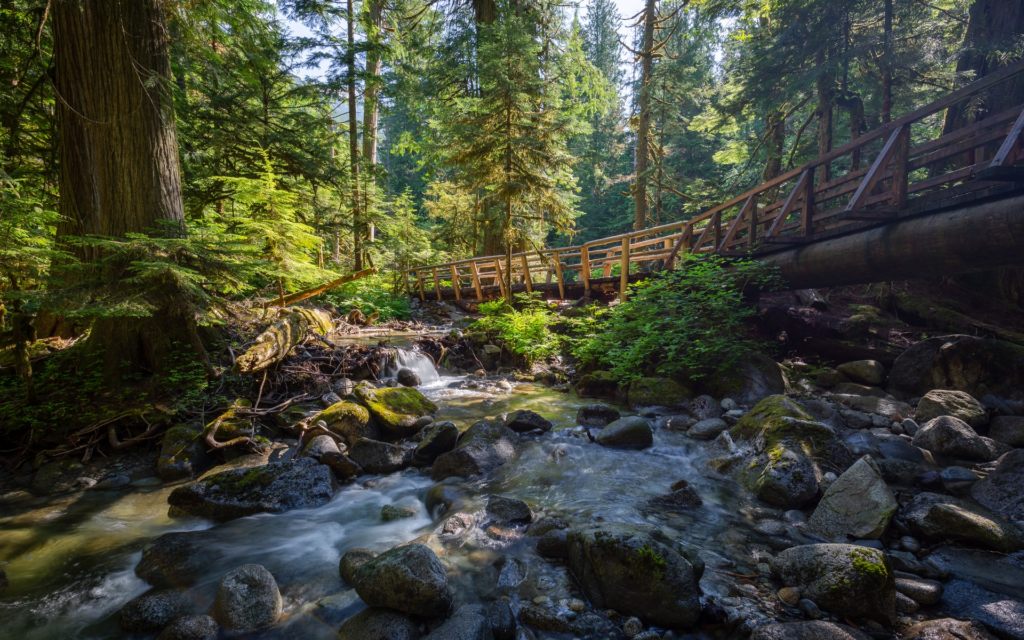http://articles.extension.org/pages/62491/types-of-riparian-areas-is-it-lentic-or-lotic
Written by Mindy Pratt, Utah State University
Lentic or Lotic?
The water of riparian areas makes them different from the adjacent terrestrial uplands. Water bodies can be natural such as streams, rivers, or lakes, or they can be man-made such as ditches, canals, ponds, or reservoirs. When riparian areas are part of a system with flowing water, such as streams or rivers, they are called lotic systems. In contrast, if the water in the system is stationary or moves only slowly without wind or at a spillway, such as lakes, ponds or seeps, the riparian area is referred to as a lentic system.
Lotic Systems
Lotic systems have two main divisions – natural and man-made systems. Natural systems include rivers and streams, while man-made systems include ditches and canals. Because man-made systems are quite variable and are managed solely to transport water to other areas, they do not share many characteristics with natural systems, and are not looked at as “healthy” or “unhealthy”. On the other hand, streams and rivers that occur naturally require certain characteristics in order to function, and can therefore be managed for those characteristics. In referring to lotic systems from this point on, the term will be referring to those natural systems that occur throughout the landscape. One way to classify these lotic systems is by the length of time water flows in the channel throughout the year. These can be divided into perennial, intermittent, and ephemeral systems.
Perennial streams/rivers have flow in the stream channel throughout the year. The sources of these systems include springs as well as substantial flow inputs from ground water. Stream flows can vary widely from year to year and may even dry up during severe droughts, but the ground water level is always near the surface. Perennial streams are found in both mesic (humid) and arid (dry) regions.
Intermittent streams/rivers are also connected to ground water, but flow in the stream channel typically occurs for a period of longer than a month, but shorter than a year. The majority of the water in these sytems comes from some surface source such as melting snow or springs. The ground water is immediately below the streambed even when there is no flow in the channel. In many cases the flowing or drying of these streams can be predicted by seasonal precipitation or snowmelt patterns. Typically, these streams are associated with arid and semiarid climates, but are also common in mesic regions. There are two types of intermittent streams, spatially and temporaly intermittent, and these often occur along the same watercourse.
- Spatially Intermittent or Interupted– water appears above the streambed in some places, while it remains below the streambed in other places.
- Temporally Intermittent – water appears above the streambed only after a rainfall or snowmelt event. These rainfall and snowmelt events recharge the stream and water typically rises above the streambed in part because the ground water is close to the streambed surface.
Ephemeral streams/rivers only flow for a few hours or days, and normally do not flow for 30 consecutive days. Flow is most commonly in response to rainfall or snowmelt events that are of sufficient magnitude to produce overland flow. The streambed of ephemeral streams is generally well above the water table, and these systems are often known as washes or arroyos. It is easy to confuse intermittent and ephemeral streams in the arid and semiarid western United States. The primary distinguishing factor between the two is the presence or proximity to ground water. In ephemeral streams it is minimal to nonexistent.
Are Ephemeral Streams really Riparian Areas?
Whether or not to include ephemeral streams as riparian areas is a main point of disagreement among scientists. The main argument against including them as riparian areas is that ephemeral streams/rivers do not have the potential to perform the entire spectrum of riparian ecological functions. The main argument for including ephemeral streams/rivers is that these areas have “many” of the characteristic ecological functions that define riparian areas. For example, these areas are frequently disturbed and unstable, they are areas of soil transport and deposition, and there is usually a higher density of vegetation along ephemeral streams/rivers. They also serve as corridors that disperse plants and serve as animal transportation routes similar to other riparian areas.
Lentic Systems
A lentic ecosystem is one such as a lake or pond that contains standing water. These can also be natural or man-made, but unlike lotic systems, the two types of systems are very similar in their characteristics. In lentic systems, water generally flows into and out of the lake or pond on a regular basis. The rates at which inflow and outflow occur vary greatly and can range from days, in the case of small pools, to centuries, in the case of the largest lakes.
Related Pages
References
Surber, Gene and Bob Ehrhart. 1998. Stream and Riparian Area Management. Montana State University Cooperative Extension Service.
USDI Bureau of Land Management. 1998. Riparian Area Management: A User Guide to Assessing Proper Functioning Condition and the Supporting Science for Lotic Areas. Technical Reference 1737-15. National Applied Resources Sciences Center, Denver, CO. 127 pp.
Zaimes G.N. (editor). Understanding Arizona’s Riparian Areas. University of Arizona Cooperative Extension, Publication # az1432. Available online at: http://ag.arizona.edu/extension/riparian/




